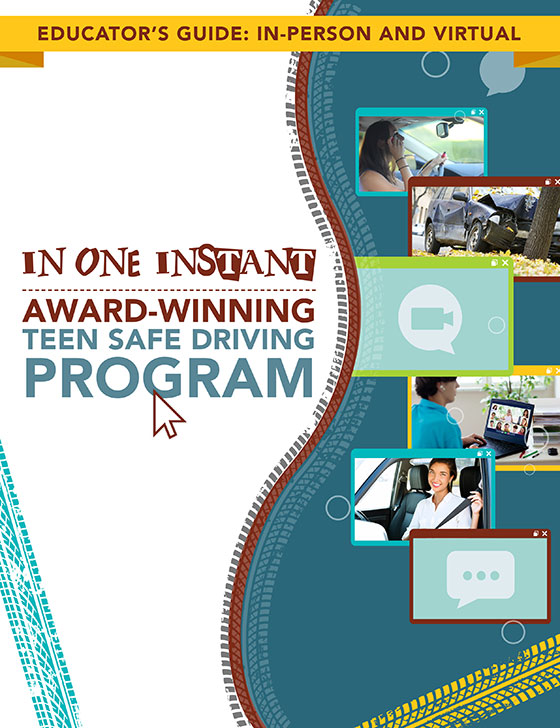Quick Overview
For Educators
In One Instant is an evidence-based award-winning, teen safe driving video program with follow-up activities that has been implemented in over 4,800 schools nationwide. The Program makes the topic of distracted, reckless, and impaired driving personal and relevant. By engaging students on an emotional level, they learn how to stay safe behind the wheel, and influence their friends and family to do the same.
Our program is designed around the Health Belief Model – the idea that people only change their behaviors when they believe themselves to be at risk for serious consequences. To get someone to change their behavior, you have to convince them they’re at risk and then provide them with the tools they need to change their behavior. The program is also informed by the Theory of Planned Behavior, which predicts human behavior based on personal attitudes, peer group norms as well as other factors.
Implementing the In One Instant Teen Safe Driving Video Program at your school is simple and easy. Educators will understand how to host the In One Instant in the classroom or online.
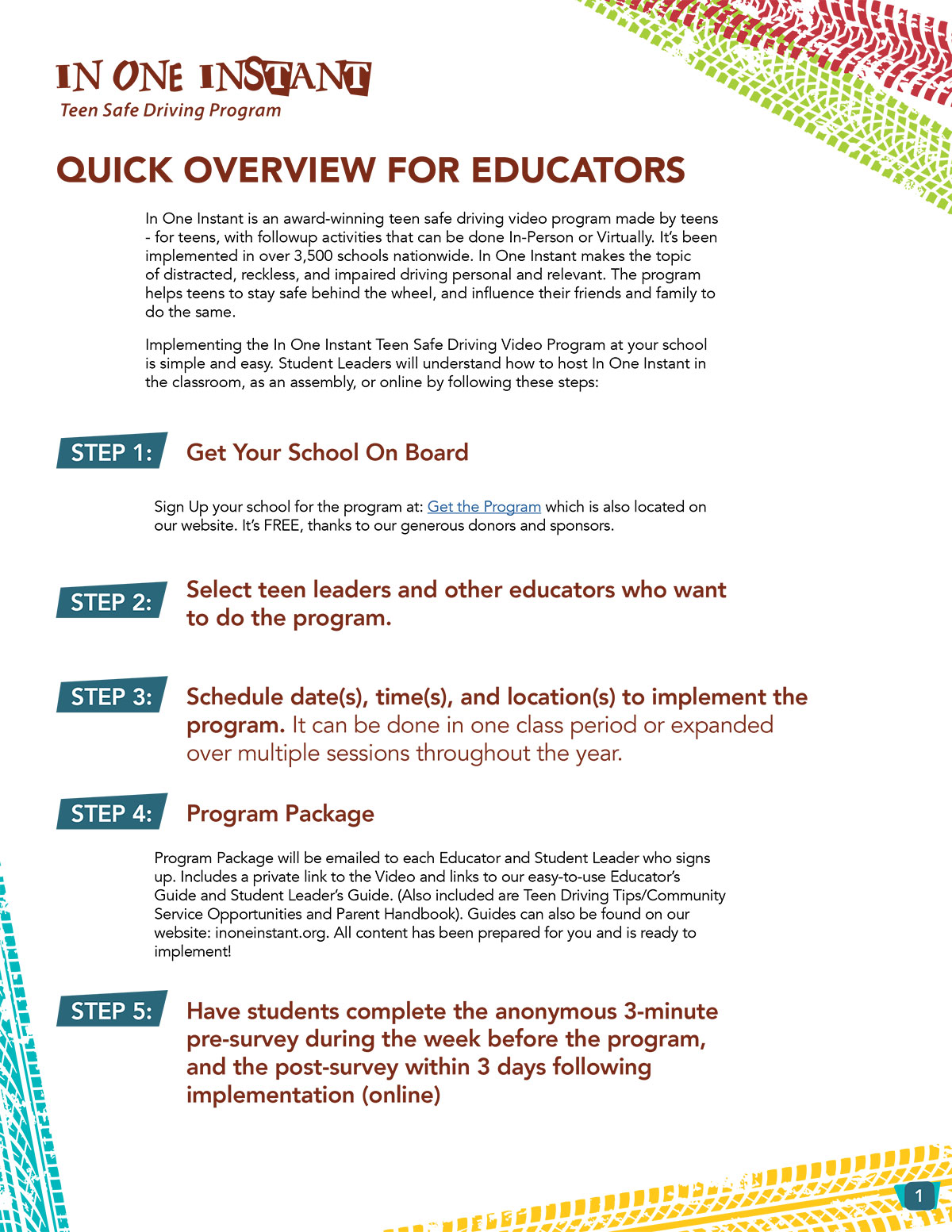
The Power of In One Instant
Hear from Mississippi State Superintendent of Education:
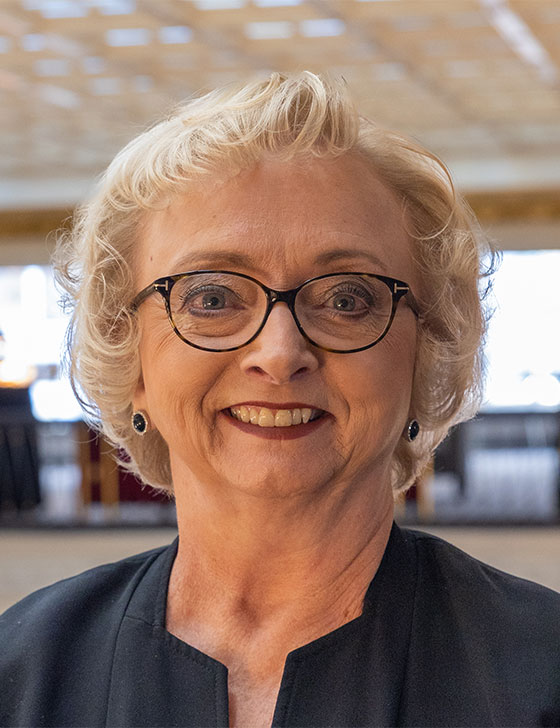
In One Instant’s success over the last decade in addressing safer teen driving has made a difference in thousands of U.S. schools. Its student-driven activities have been especially impactful and is only one of the reasons why I’ve recommended the program to every school district in our state. I highly recommend it to all my fellow educators nationwide.
Carey M. Wright
MS State Superintendent of Education
Hear from a former LA Unified School District Superintendent:
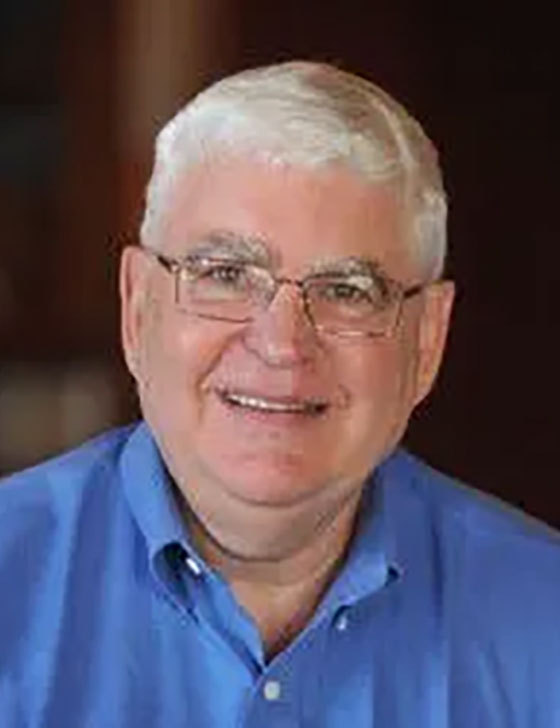
Your role in bringing this powerful, evidence-based program to your school has the potential to save lives. Many parents and teens, as well as your administrative colleagues, have acknowledged the impact of this emotional experience on teen driving behavior, making smarter choices and creating change. Consider offering this invaluable set of resources to your school community.
Merle Price
Former Principal & Deputy Superintendent,
Los Angeles United School District
LEARN MORE
A Message From Merle Price, Former Principal and Deputy Superintendent, LAUSD
The worst experience a school may face is the death of a student, especially in the case of a sudden and preventable accident, which for teens most frequently involves driving distractions due to texting, cell phone use, recklessness, and impairment. Those who have experienced the aftermath of such a tragedy know that the trauma to classmates, families, faculty and staff goes beyond anything that they have been prepared for and will impact the school community for a long time.
In One Instant is an award-winning and research-based resource for schools that has demonstrated ability to impact teens and their decision making in ways that can prevent tragic driving collisions. This video assembly program and toolkit have been developed with input from health and safety professionals, teachers, counselors, school administrators, psychologists, parents and teens themselves. It is easily administered with follow up materials for administrators, students, teachers, and parents.
With minimal disruption to instructional programs and school schedules, this program can provide a bonding experience between teens, their parents, and school personnel to help teens recognize the importance of their decisions and the role they play in preventing tragedies.
Your role in bringing this powerful program to your school has the potential to save lives. Many parents, teens, and administrators have acknowledged how this powerful and emotional experience impacts teen driving behavior, promotes smarter choices, and creates long-lasting change.
Please take a few minutes to see how easily this life saving program has been successfully implemented at many high schools and consider bringing this invaluable set of resources to your school community.
Hear from a Trauma Prevention and Outreach Nurse:
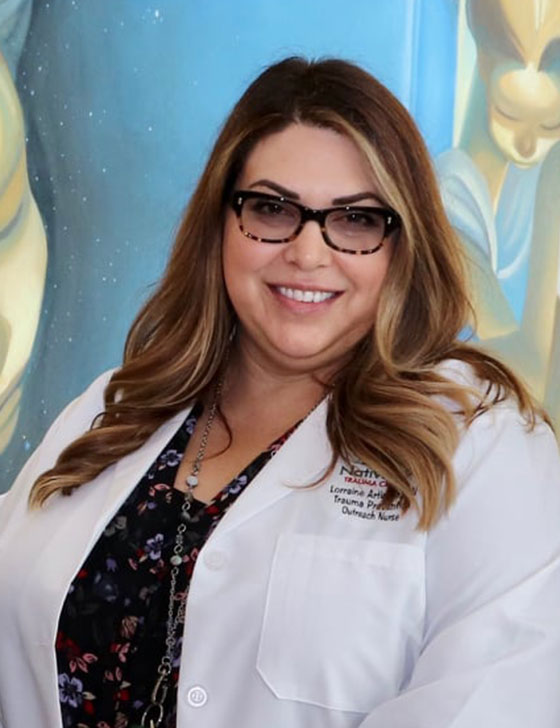
Lorraine Artinger, RN
Trauma Prevention and Outreach
LEARN MORE
I’m the Trauma Prevention and Outreach Nurse for Natividad Medical Center in Monterey County. As injury prevention educators and healthcare providers, we are firsthand witnesses to the tragedies caused by motor vehicle crashes. I wanted to share with you an exciting and impactful program, In One Instant, designed specifically for this purpose, which we have successfully implemented in all our Salinas/Monterrey high school prevention programs.
In One Instant is an award-winning, evidence-based program that empowers teens to make smart choices and save lives. Informed by years of research, this turnkey program features a powerful short video (used in assemblies and classrooms) along with comprehensive follow-up educational online materials. Designed for easy implementation, In One Instant can be completed in one class period or expanded into an entire unit. The program also offers teens the opportunity for continued engagement year-round, providing safe driving tips and numerous Community Service opportunities through their online Teen Guide.
In One Instant is endorsed by the CHP, as well as the LAPD, LAFD, LA County Medical Association, UCLA School of Public Health, and USC Center for Trauma, Violence and Injury Prevention. The program has received prestigious awards from the U.S. Congress, California State Senate and LA City Council, and has been featured on ABC News and FOX News.
I am enlisting your help to bring In One Instant to your high schools and community centers through your outreach programs. It’s effective, simple and easy to implement, and time efficient. Please watch the quick four-minute trailer and testimonial videos available on the In One Instant website homepage to get a better idea of what the program entails: http://www.inoneinstant.org/
Together, we can reduce motor vehicle crashes and trauma among our youth!
Testimonials
Student Videos
EXPRESS YOURSELF
Feel free to create, express yourself; share your story, drawing, video, poetry or song and be part of the solution.
What’s more dangerous than diving with sharks?
In One Instant PSA
Chase
In One Instant Student Video PSA
Sophia
In One Instant Student Video PSA
Tucker
In One Instant Student Video PSA
Don’t Tempt Fate, the Text Can Wait
by Graham O’Shaughnessy &
Dallas McKinnon
Impact Interview
Student and parents after experiencing the In One Instant Program
Impact Interview
Student after experiencing the In One Instant Program
Impact Interview
Student after experiencing the In One Instant Program
Impact Interview
Student after experiencing the In One Instant Program
Impact Interview
Student after experiencing the In One Instant Program
Impact Interview
Student after experiencing the In One Instant Program
In One Instant
LACES High School Interview 1
Insta-Vid
Leslie on keeping herself from texting and driving
Insta-Vid
Nathan on preventing texting and driving
Insta-Vid
Ben says how texting and driving go together
Insta-Vid
John on his friends texting and driving
Insta-Vid
Megan on her friends texting and driving
Insta-Vid
Maddie on her friends texting and driving
In One Instant
LACES High School Interview 2
In One Instant
LACES High School Interview 3
Vow to save a life!
Educator’s Guide
In One Instant empowers your students to make smart choices and save lives by reducing distracted and reckless driving.
This emotionally charged, award-winning program makes the issues timely and personal, compelling your students to own their decisions – while influencing peers, parents, and siblings to do the same.
More than 4,800 high schools nationwide have implemented In One Instant. It’s designed around the Health Belief Model, which says people change behaviors when they believe themselves to be at risk for more serious consequences. The program persuades by depicting realistic risks, then providing tools needed to change behaviors.
